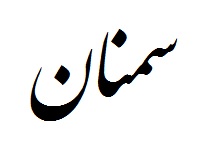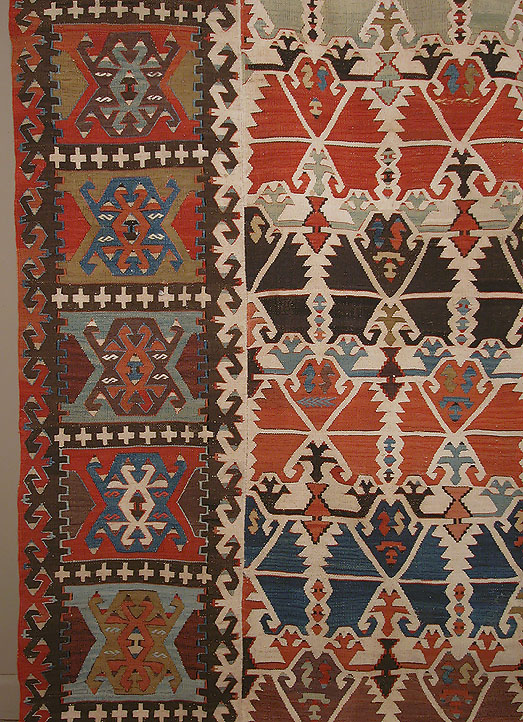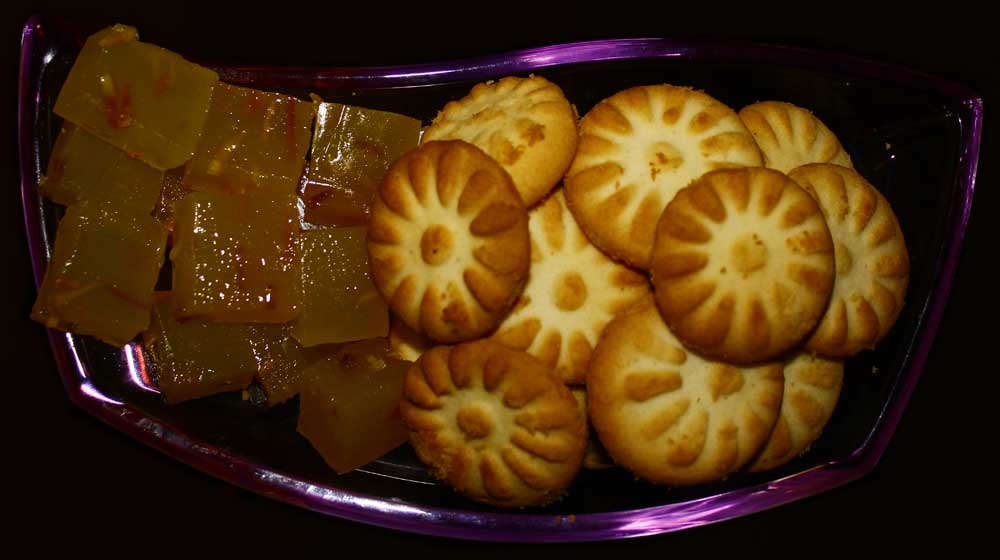|
Semnan (city)
Semnan (Persian: , ); is the capital city of Semnan Province, situated on the alluvial fan of the Golrudbar creek in north central Iran, 216 km east of Tehran and 640 km west of Mashhad. With a population of 185,129 people, Semnan is the most populated city in Semnan Province and serves as the capital of it. The city is also the hub of the Semnani language, a sub-branch of the Iranian languages spoken to the north, and home to the Semnani ethnic group. Semnan offers various recreational activities, historical and religious sites, festivals, gardens and parks, centers of higher education, and Semnani culture. The city is as the cultural and political capital of the Semnan Province. The city's main souvenirs are daffodil flowers, Shirmal pastry, Kolüçe cookies, kilim rugs, and shortbread. Etymology There are several theories which seek to explain the origin of the name ''Semnan''. Semnan was an ancient pre-zoroastrian city in which the locals practiced idol-worshi ... [...More Info...] [...Related Items...] OR: [Wikipedia] [Google] [Baidu] |
List Of Sovereign States
The following is a list providing an overview of sovereign states around the world with information on their status and recognition of their sovereignty. The 206 listed states can be divided into three categories based on membership within the United Nations System: 193 UN member states, 2 UN General Assembly non-member observer states, and 11 other states. The ''sovereignty dispute'' column indicates states having undisputed sovereignty (188 states, of which there are 187 UN member states and 1 UN General Assembly non-member observer state), states having disputed sovereignty (16 states, of which there are 6 UN member states, 1 UN General Assembly non-member observer state, and 9 de facto states), and states having a special political status (2 states, both in free association with New Zealand). Compiling a list such as this can be a complicated and controversial process, as there is no definition that is binding on all the members of the community of nations concerni ... [...More Info...] [...Related Items...] OR: [Wikipedia] [Google] [Baidu] |
Mashhad
Mashhad ( fa, مشهد, Mašhad ), also spelled Mashad, is the List of Iranian cities by population, second-most-populous city in Iran, located in the relatively remote north-east of the country about from Tehran. It serves as the capital of Razavi Khorasan Province and has a population of 3,001,184 (2016 census), which includes the areas of Mashhad Taman and Torqabeh. The city has been governed by different ethnic groups over the course of its history. Mashhad was once a major oasis along the ancient Silk Road connecting with Merv to the east. It enjoyed relative prosperity in the Mongol period. The city is named after the shrine of Imam Reza, the eighth Shia Imam, who was buried in a village in Khorasan Province, Khorasan which afterward gained the name, meaning the "place of Martyr, martyrdom". Every year, millions of pilgrims visit the Imam Reza shrine. The Abbasid Caliphate, Abbasid caliph Harun al-Rashid is also buried within the same shrine. Mashhad is also known colloq ... [...More Info...] [...Related Items...] OR: [Wikipedia] [Google] [Baidu] |
Noah
Noah ''Nukh''; am, ኖህ, ''Noḥ''; ar, نُوح '; grc, Νῶε ''Nôe'' () is the tenth and last of the pre-Flood patriarchs in the traditions of Abrahamic religions. His story appears in the Hebrew Bible (Book of Genesis, chapters 5–9), the Quran and Baha'i writings. Noah is referenced in various other books of the Bible, including the New Testament, and in associated deuterocanonical books. The Genesis flood narrative is among the best-known stories of the Bible. In this account, Noah labored faithfully to build the Ark at God's command, ultimately saving not only his own family, but mankind itself and all land animals, from extinction during the Flood. Afterwards, God made a covenant with Noah and promised never again to destroy all the Earth's creatures with a flood. Noah is also portrayed as a "tiller of the soil" and as a drinker of wine. Biblical narrative Tenth and final of the pre-Flood (antediluvian) Patriarchs, son to Lamech and an unnamed mother, Noa ... [...More Info...] [...Related Items...] OR: [Wikipedia] [Google] [Baidu] |
Iranian Peoples
The Iranian peoples or Iranic peoples are a diverse grouping of Indo-European peoples who are identified by their usage of the Iranian languages and other cultural similarities. The Proto-Iranians are believed to have emerged as a separate branch of the Indo-Iranians in Central Asia around the mid-2nd millennium BC. At their peak of expansion in the mid-1st millennium BC, the territory of the Iranian peoples stretched across the entire Eurasian Steppe, from the Great Hungarian Plain in the west to the Ordos Plateau in the east and the Iranian Plateau in the south.: "From the first millennium b.c., we have abundant historical, archaeological and linguistic sources for the location of the territory inhabited by the Iranian peoples. In this period the territory of the northern Iranians, they being equestrian nomads, extended over the whole zone of the steppes and the wooded steppes and even the semi-deserts from the Great Hungarian Plain to the Ordos in northern China." The ... [...More Info...] [...Related Items...] OR: [Wikipedia] [Google] [Baidu] |
Scythians
The Scythians or Scyths, and sometimes also referred to as the Classical Scythians and the Pontic Scythians, were an Ancient Iranian peoples, ancient Eastern Iranian languages, Eastern * : "In modern scholarship the name 'Sakas' is reserved for the ancient tribes of northern and eastern Central Asia and Eastern Turkestan to distinguish them from the related Massagetae of the Aral region and the Scythians of the Pontic steppes. These tribes spoke Iranian languages, and their chief occupation was nomadic pastoralism." * : "Near the end of the 19th century V.F. Miller (1886, 1887) theorized that the Scythians and their kindred, the Sauromatians, were Iranian-speaking peoples. This has been a popular point of view and continues to be accepted in linguistics and historical science [...]" * : "From the end of the 7th century B.C. to the 4th century B.C. the Central- Eurasian steppes were inhabited by two large groups of kin Iranian-speaking tribes – the Scythians and Sarmatians [.. ... [...More Info...] [...Related Items...] OR: [Wikipedia] [Google] [Baidu] |
Zoroastrian
Zoroastrianism is an Iranian religion and one of the world's oldest organized faiths, based on the teachings of the Iranian-speaking prophet Zoroaster. It has a dualistic cosmology of good and evil within the framework of a monotheistic ontology and an eschatology which predicts the ultimate conquest of evil by good. Zoroastrianism exalts an uncreated and benevolent deity of wisdom known as '' Ahura Mazda'' () as its supreme being. Historically, the unique features of Zoroastrianism, such as its monotheism, messianism, belief in free will and judgement after death, conception of heaven, hell, angels, and demons, among other concepts, may have influenced other religious and philosophical systems, including the Abrahamic religions and Gnosticism, Northern Buddhism, and Greek philosophy. With possible roots dating back to the 2nd millennium BCE, Zoroastrianism enters recorded history around the middle of the 6th century BCE. It served as the state religion of the ancient I ... [...More Info...] [...Related Items...] OR: [Wikipedia] [Google] [Baidu] |
Semnan Calligraphy Font
Semnan may refer to: * Semnan Province, a province in Iran * Semnan County, a county in the Semnan Province of Iran * Semnan, Iran Semnan (Persian: , ); is the capital city of Semnan Province, situated on the alluvial fan of the Golrudbar creek in north central Iran, 216 km east of Tehran and 640 km west of Mashhad. With a population of 185,129 people, Semnan is ..., a city in the Semnan County of Iran See also * Semnani (other) * {{geodis ... [...More Info...] [...Related Items...] OR: [Wikipedia] [Google] [Baidu] |
Shortbread
Shortbread or shortie is a traditional Scottish biscuit usually made from one part white sugar, two parts butter, and three to four parts plain wheat flour. Unlike many other biscuits and baked goods, shortbread does not contain any leavening, such as baking powder or baking soda. Shortbread is widely associated with Christmas and Hogmanay festivities in Scotland, and some Scottish brands are exported around the world. History Shortbread originated in Scotland. Although it was prepared during much of the 12th century, and probably benefited from cultural exchange with French pastry chefs during the Auld Alliance between France and Scotland, the refinement of shortbread is popularly credited to Mary, Queen of Scots in the 16th century. This type of shortbread was baked, cut into triangular wedges, and flavoured with caraway seeds. The triangular wedges became known as "petticoat tails" in Scots and this form of shortbread has become particularly associated with Mary, Queen ... [...More Info...] [...Related Items...] OR: [Wikipedia] [Google] [Baidu] |
Kilim
A kilim ( az, Kilim کیلیم; tr, Kilim; tm, Kilim; fa, گلیم ''Gilīm'') is a flat tapestry-woven carpet or rug traditionally produced in countries of the former Persian Empire, including Iran, the Balkans and the Turkic countries. Kilims can be purely decorative or can function as prayer rugs. Modern kilims are popular floor coverings in Western households. Etymology The term 'kilim' originates from the Persian ''galīm'' (گلیم) where it means 'to spread roughly', perhaps of Akkadian or Aramean origin. another name for Galim(Gilim) is Plas, Ferdowsi and other persian poet mentioned both Galim and plas as synonyms in Shahnameh No 35 mentioned as Plas(pluNo14 mentioned as Gali History Like Pile weave, pile carpets, kilim have been produced since ancient times. The explorer Mark Aurel Stein found kilims dating to at least the fourth or fifth century CE in Hotan, China: :"As kilims are much less durable than rugs that have a pile to protect the warp and weft, it is ... [...More Info...] [...Related Items...] OR: [Wikipedia] [Google] [Baidu] |
Kolüçe
Koloocheh or Kleicha (Persian: کلوچه), also known as Persian New Year Bread, is a Persian stamped cookie or bread, originating in various parts of Iran. There are many variations on the recipe (bready-texture vs. crispy; and stuffed vs. unstuffed) which spans from the Arabian Peninsula to various diaspora communities including in Eastern Europe, and North America. About Typically koloocheh are cookies filled with dates and walnuts, but can be stuffed with grated coconut and additionally spiced with saffron, rose water, cardamom, cinnamon, or citrus zest. The recipe for Caspian cuisine-style bready koloocheh cookie can be made vegan by replacing butter with coconut oil. It is a recipe made by Persian Jews during the holiday Purim; by Christians during Easter; and Muslims during Ramadan. For Norooz (English: Persian New Year), Iranians will make a koloocheh bread. Koloocheh cookies from Southern Iran are brittle biscuits that principally consists of water, sugar, wheat ... [...More Info...] [...Related Items...] OR: [Wikipedia] [Google] [Baidu] |
Sheermal
Sheermal (Persian language, Persian/Urdu: , hi, शीरमल), also spelled shirmal, is a saffron-flavored traditional flatbread eaten in Iran and the Indian subcontinent. The word sheermal is derived from the Persian words شیر (transliterated, translit. sheer) meaning milk, and مالیدن (transliterated, translit. malidan) meaning to rub. In a literal translation, sheermal means milk rubbed. Originating in Persia, it was introduced to North India by the Mughal Empire, Mughal emperors during the medieval India, medieval period. It became a delicacy of Awadhi cuisine, Lucknow, Hyderabadi cuisine, Hyderabad and Hyderabadi cuisine, Aurangabad. It is also part of the Awadhi cuisine and is enjoyed in Old Bhopal and Pakistan. Preparation Shirmal is a mildly sweet naan made out of maida flour, maida, leavened with yeast, baked in a tandoor or oven. Shirmal was traditionally made like roti. Today, shirmal is prepared like naan. The warm water in the recipe for naan roti was repl ... [...More Info...] [...Related Items...] OR: [Wikipedia] [Google] [Baidu] |
Narcissus (plant)
''Narcissus'' is a genus of predominantly spring flowering perennial plant, perennial plants of the amaryllis family, Amaryllidaceae. Various common names including daffodil,The word "daffodil" is also applied to related genera such as ''Sternbergia'', ''Ismene (plant), Ismene'' and ''Fritillaria meleagris''. It has been suggested that the word "Daffodil" be restricted to the wild species of the British Isles, ''N. pseudonarcissus''. narcissus, and jonquil are used to describe all or some members of the genus. ''Narcissus'' has conspicuous flowers with six petal-like tepals surmounted by a cup- or trumpet-shaped Corona (plant structure), corona. The flowers are generally white and yellow (also orange or pink in garden varieties), with either uniform or contrasting coloured tepals and corona. ''Narcissus'' were well known in ancient civilisation, both medicinally and botanically, but formally described by Carl Linnaeus, Linnaeus in his ''Species Plantarum'' (1753). The genus ... [...More Info...] [...Related Items...] OR: [Wikipedia] [Google] [Baidu] |





_p012_BAKU%2C_FIRE_TEMPLE_(cropped).jpg)



